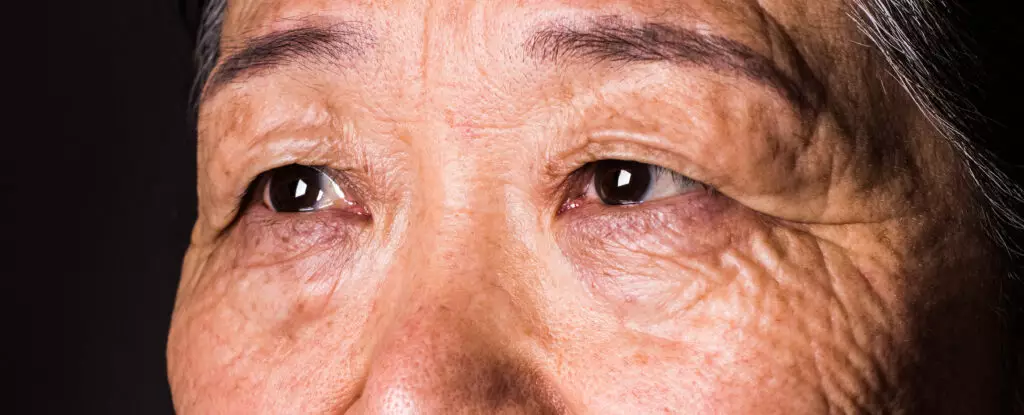The age-old adage, “the eyes are the windows to the soul,” may have an equally profound significance when it comes to our cognitive health. Recent research has unveiled a fascinating correlation between visual sensitivity and the early detection of Alzheimer’s disease. Astonishingly, our eyesight could offer a telling glimpse into our brain’s well-being, potentially identifying cognitive decline as many as twelve years before a formal diagnosis can be made. This incredible potential for preventative health measures places the spotlight on our eyes—our literal windows into the inner workings of our minds.
At the crux of this revelation is a large-scale study conducted with 8,623 participants in Norfolk, England. Year after year, these healthy individuals were monitored until a significant number—537—were diagnosed with dementia. By juxtaposing the results of initial visual sensitivity tests with later cognitive outcomes, researchers gleaned crucial insights. Those who would go on to develop dementia exhibited markedly slower responses when attempting to detect simple visual cues, such as a triangle appearing amidst a flurry of moving dots.
The Neural Connection: Vision and Cognition
Why does a delay in visual perception matter? The implications lie deep within our brain’s architecture. Preliminary findings suggest that the amyloid plaques often associated with Alzheimer’s disease may target visual-processing areas first. As cognitive impairment progresses, the same toxic buildup spreads to areas responsible for memory function. What this indicates is a potentially effective early detection mechanism wherein visual tests could unveil deficits long before traditional memory assessments.
Moreover, cognitive decline in Alzheimer’s can also affect other aspects of visual processing, particularly contrast sensitivity and color discernment. Early indicators such as difficulty distinguishing between shades of blue and green can pose everyday challenges for individuals, who may remain unaware that these issues signify deeper health concerns.
Visual Processing and Attention Control Issues
Interestingly, Alzheimer’s impacts not just how we see but how we react to visual stimuli. One particular symptom is compromised “inhibitory control” of eye movements, whereby distractions take precedence over relevant visual information. This inability to filter out disturbances could contribute to heightened risks, especially when it comes to tasks like driving—an area that researchers at Loughborough University are currently exploring.
Another aspect of visual processing that can signal early cognitive decline is the inefficacy in recognizing faces. Unlike biologically typical individuals, those on the precipice of dementia may fail to follow the natural trajectory of scanning a person’s face, which in a healthy brain helps to cement recognition. This deviation can lead to social challenges that compound over time, leaving individuals appearing disoriented or lost in social scenarios.
Eye Movements and Memory Enhancement
Considering that visual operations are intricately woven with memory performance, researchers are embarking on a novel exploration: the potential of targeted eye movements to enhance memory. Preliminary studies suggest that increasing the frequency of focused eye movements may alleviate memory challenges. The relationship between vision and memory is further underscored by findings that individuals who engage in activities like reading and watching television have better memory retention and reduced dementia risk.
These activities stimulate eye movement, enhancing brain connectivity, and revealing an intersection between lifestyle choices and cognitive longevity. Nevertheless, the nuances of this relationship—such as the potential variability in benefits based on handedness—call for a deeper understanding.
The Need for Diagnostic Evolution
Despite all these intriguing revelations, there remain significant barriers to utilizing eye movements effectively in the clinical setting. The expense and complexity of eye-tracking technologies hinder their widespread adoption and application in diagnosing early-stage Alzheimer’s. As researchers strive to bridge the gap between these discoveries and clinical routine, the call for more accessible diagnostic methods grows ever louder.
The intersection of vision and cognitive health offers us not just a window into preventative strategies but also a transformative approach to Alzheimer’s diagnosis and management. In understanding the profound relationship between our eyes and our cognitive faculties, we may very well unlock the key to a healthier, more informed approach to aging. The time is ripe for innovation and change, as we look towards a future where early detection is a palpable reality, significantly enhancing the quality of life for countless individuals.


Leave a Reply